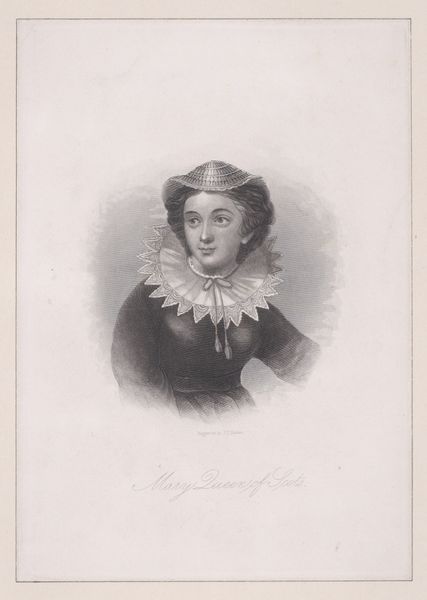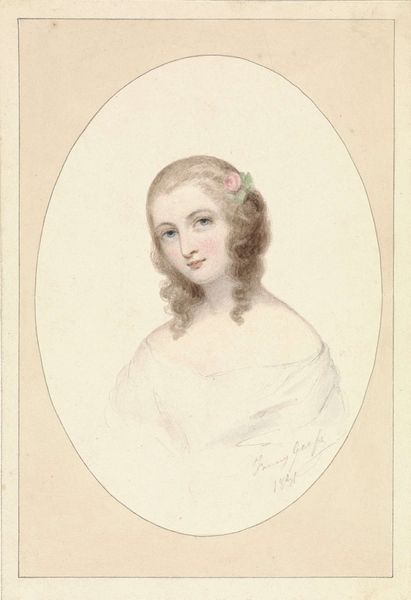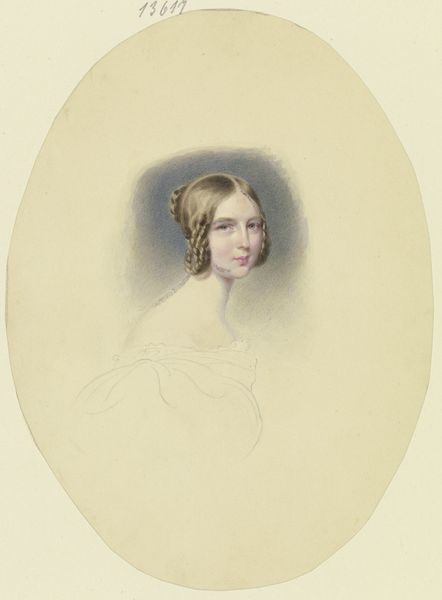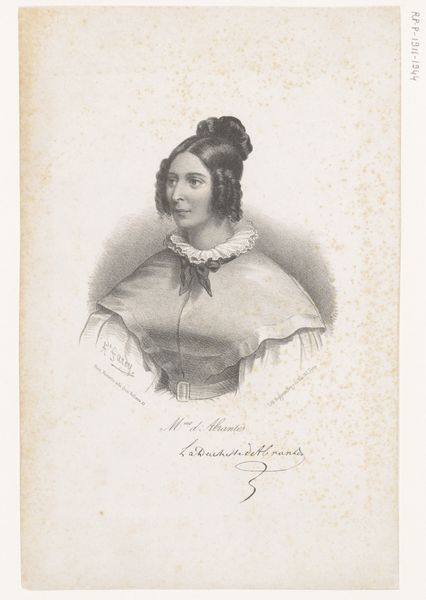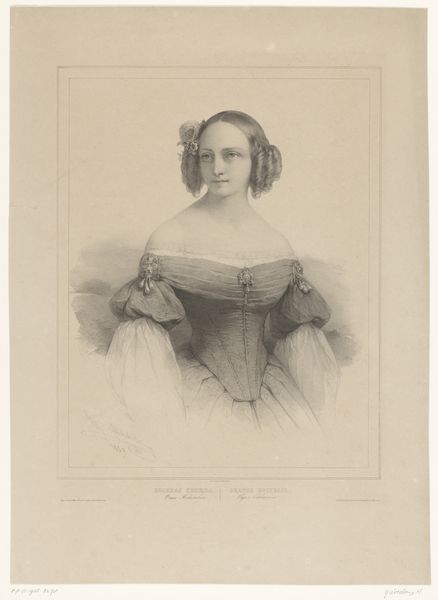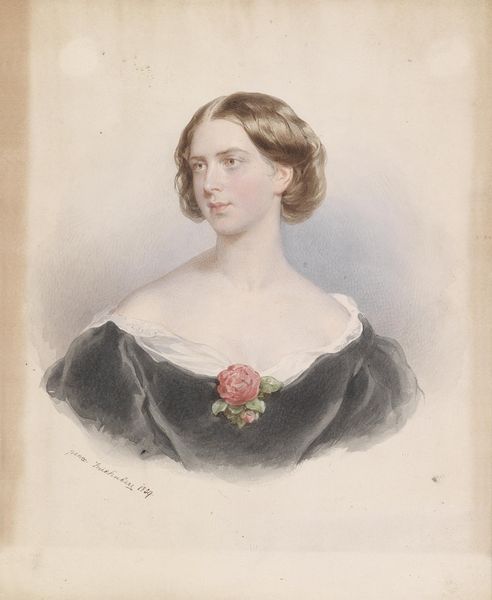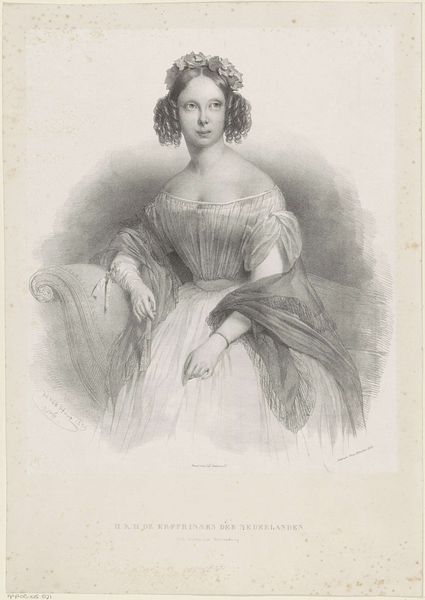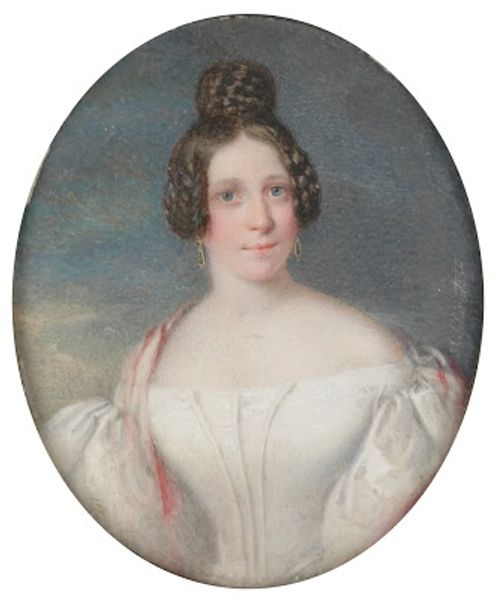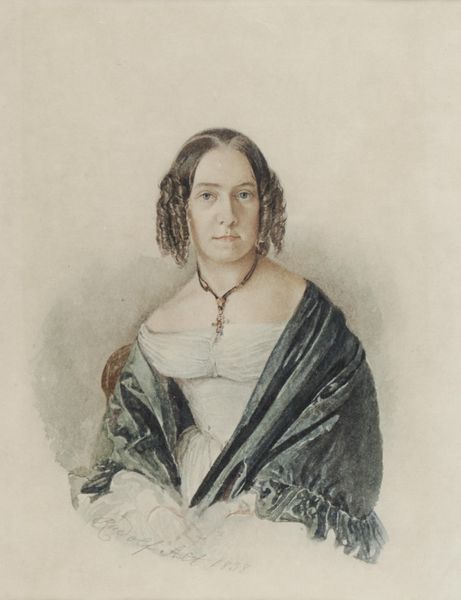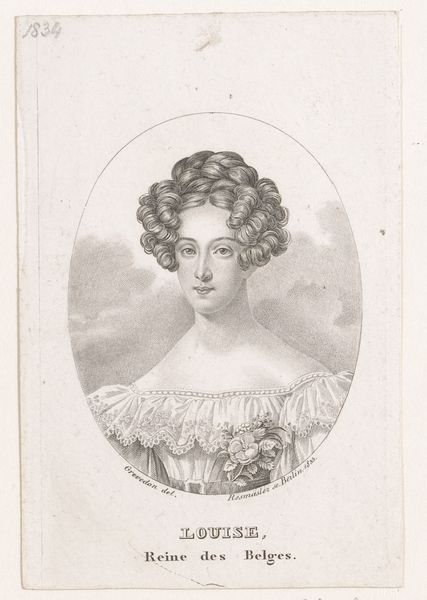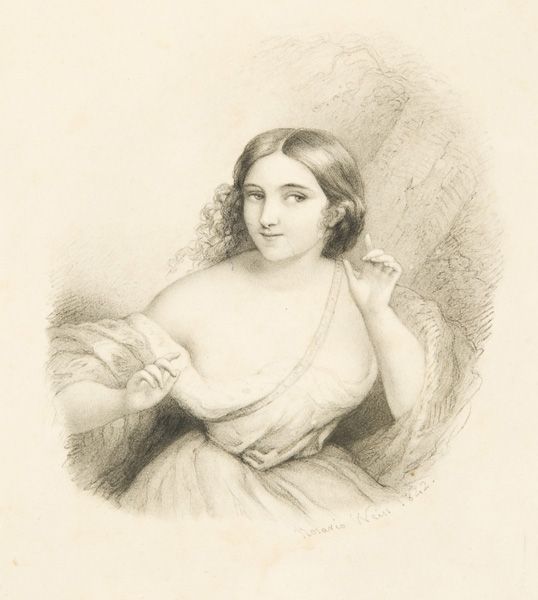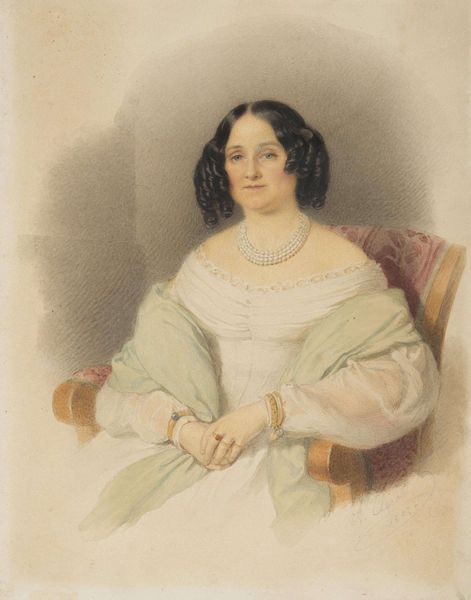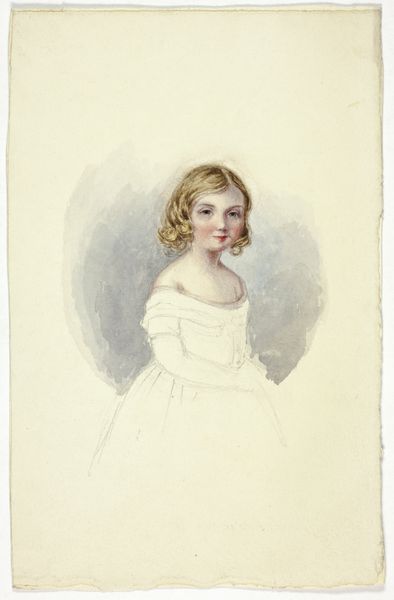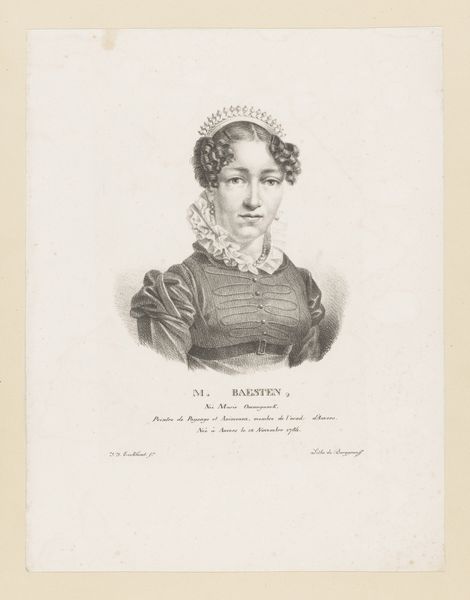
painting, watercolor
#
portrait
#
aged paper
#
toned paper
#
painting
#
watercolor
#
coloured pencil
#
romanticism
Copyright: Public domain
Alexander Clarot made this portrait of Zofia Branicka in 1837, using delicate watercolor on paper. Clarot skillfully deployed his materials to create subtle gradations of tone. Look closely, and you can see how the transparency of the watercolor allows the white paper to shine through, adding luminosity to Zofia's face and dress. The fine lines and soft washes speak to the artist's mastery of the medium, but it is worth remembering that such images were made for a specific purpose. Portraiture in the 19th century was an industry, of sorts, where artists could commodify their skills and the wealthy could display their status. Zofia's refined features, elegant attire, and the sheer expense of commissioning a portrait like this, all speak to her privileged position in society. The very act of painting, with its reliance on skilled labor and access to materials, reflects the economic structures of the time. Ultimately, this portrait invites us to consider the social and economic forces that shape artistic production.
Comments
No comments
Be the first to comment and join the conversation on the ultimate creative platform.
